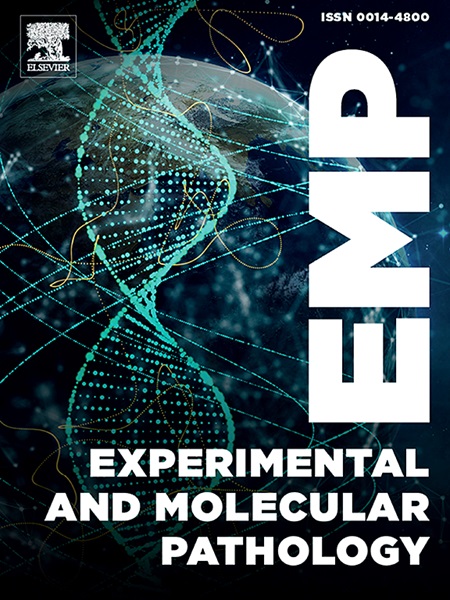三维右旋糖酐水凝胶培养对小鼠脾、肝间充质干细胞微循环的调节作用
IF 3.7
4区 医学
Q2 PATHOLOGY
引用次数: 0
摘要
为了使间充质干细胞(MSC)治疗有效,血管系统可以用来输送和引导细胞到达目标组织。然而,在培养皿中扩增的MSCs通常表现出有限的可变形性,并且在通过微循环归巢到下游器官时通常被毛细血管网络排除在外。在此,我们提出利用专门设计的三维葡聚糖水凝胶,并调整水凝胶组成的微观异质性,使给药细胞在机械上符合毛细血管的结构和力学。通过原子力显微镜(AFM)测定细胞模量,流式细胞术和荧光成像分析细胞骨架蛋白的表达,研究了培养皿、微观均质(HOM)和非均质(HET)葡聚糖水凝胶培养细胞的体外变形能力。体外实验结果表明,从2D培养皿到homo -水凝胶衍生细胞,再到het -水凝胶衍生细胞,细胞的变形能力逐渐增加。小鼠体内实验表明,细胞在小鼠器官内容易变形并通过,阻力减小。提示可以通过调节依赖于HOM或HET水凝胶刺激的细胞力学,在小鼠的脾脏和肝脏之间选择hMSC微循环的主要目的地,这为靶向器官病变的机械修饰MSC治疗奠定了潜在的基础。本文章由计算机程序翻译,如有差异,请以英文原文为准。
Modulating cellular deformability via 3D dextran hydrogel cultivation to regulate the microcirculation of mesenchymal stem cells in murine spleen and liver
For mesenchymal stem cell (MSC) therapy to be effective, the vascular system may be used to deliver and steer the cells to the target tissue. However, the expanded MSCs in petri dishes typically exhibit limited deformability and commonly excluded by the capillary networks when homing to the downstream organs via microcirculation. Here, we propose to utilize specially designed 3D dextran hydrogels and tuning the microscopic heterogeneity of hydrogel composition to make the administrated cells mechanically comply with the structure and mechanics of the capillary. The deformability of cells cultured in petri dishes, microcosmically homogeneous (HOM), and heterogeneous (HET) dextran hydrogels was investigated in vitro by measuring cell moduli through atomic force microscope (AFM), analyzing the expression of cytoskeletal protein via flow cytometry and fluorescent imaging. The in vitro experimental results demonstrate a progressive increase in cell deformability from 2D dishes, to HOM-hydrogel derived cells, and then to HET-hydrogel derived cells. The in vivo mouse experiment indicates the cells could deform accordingly and pass through easily with reduced resistance inside the mouse organs. It is suggested that the main destination of hMSC microcirculation could be selected between the spleen and liver of mice, by tuning cell mechanics that depends on the stimulus from HOM or HET hydrogel, which lays a potential foundation for the mechanically modified MSC therapy targeting organ lesions.
求助全文
通过发布文献求助,成功后即可免费获取论文全文。
去求助
来源期刊
CiteScore
8.90
自引率
0.00%
发文量
78
审稿时长
11.5 weeks
期刊介绍:
Under new editorial leadership, Experimental and Molecular Pathology presents original articles on disease processes in relation to structural and biochemical alterations in mammalian tissues and fluids and on the application of newer techniques of molecular biology to problems of pathology in humans and other animals. The journal also publishes selected interpretive synthesis reviews by bench level investigators working at the "cutting edge" of contemporary research in pathology. In addition, special thematic issues present original research reports that unravel some of Nature''s most jealously guarded secrets on the pathologic basis of disease.
Research Areas include: Stem cells; Neoangiogenesis; Molecular diagnostics; Polymerase chain reaction; In situ hybridization; DNA sequencing; Cell receptors; Carcinogenesis; Pathobiology of neoplasia; Complex infectious diseases; Transplantation; Cytokines; Flow cytomeric analysis; Inflammation; Cellular injury; Immunology and hypersensitivity; Athersclerosis.

 求助内容:
求助内容: 应助结果提醒方式:
应助结果提醒方式:


